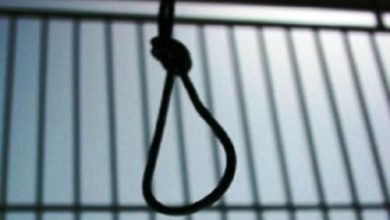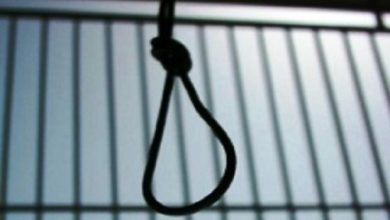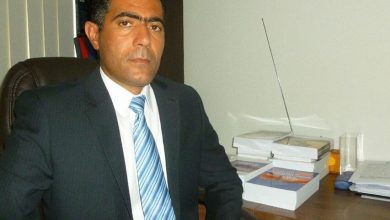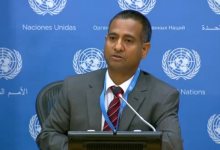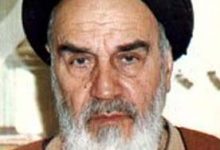Patterns of Global Terrorism: 1990
PATTERNS OF GLOBAL TERRORISM:
L merous’successe$ in bringing the rule Bear on terrorists.
The continuing decline in the number of international terrorist incidents during 1990 is encouraging. From a peak of 856 in 1988, the number of incidents decreased to 455 in 1990. Even more encouraging are the increasing counterterrorist cooperation among governments and our nu
As part’ of our counterterrorist strategy; the” United “States*=- G1 V works with other governments to identify,–apprehend;-and prosecute tar
training provided urider the Department of States Anti-Terrorism Training Assistance Program, we have improved the ability of other governments to preempt, or to investigate and prosecute, terrorist attacks.-The program has been extremely successful, and in 1990 for
* First time law enforcement Officials from the newly democratic East
European states participated.
Another important element of our counterterrorist effort, thefiewards
for Terrorism Informatlon Program received a significant boost=”in’1990.
Frustration or favorable resolution of terrorist acts against US
persons or properties overseas.” Late in 1989, Congress increased
‘ the ceiling for an individual reward to $2‘miiiion. Rewards of more than 0 $500,000 have been paid under this program. In 1990, the Air Trans
port Association (ATA) and the Air Line Pilots‘ Association’ (ALPA) matched the reward ceiling with $2 million to create a potentiai$4.mil
lion reward for inf0rmatIon—aboufat1acks on civil aviati-on,
Despite this good news, the threat of terrorisrn remains. Still; the F grass we have made reinforces our conviction that our counterterrorist policy is working and that continued vigilance will increase the_eHec-
V tiveness of our’ efforts.
This report is submitted in compliance with Title 22 of the United
States Code, Section 26561‘ (a). Which requires the State
to provide Congress with a full and complete annual report on terror;
(8) (1) and (2) of the Act. -_
As required by legislation, the report detailed assessments of .
‘ foreign countries where significant terrorist acts occurred and countries
About which Congress was notified during the preceding live years pursuant to Section 6 (j ) of the Export Administration Act of 1979 ‘(the so-called terrorist list countries that have repeatedly provided support t for international terrorism). In addition, the report includes all relevant information about the previous year’s activities of individuals. Terrorist
– Groups, or umbrella groups under which such terrorist groups fall, known
to be responsible for the kidnapping or death pr any during the preceding five years, and groups known to be financed by “terrorist list” countries. *
No onqdefinition has gained universal acceptance. For
Title 22 of the United States Code, Section 2656f_
– The term terrorism means premeditated, politically motivated violence perpetrated against noncombatant targets by sub national or clandestine_agents, usually intended to influence an audience}
clude, in addition to civilians. Military personnel who at rinoideni are unarmed and! or not on duty. For example. in past response we have iisied as terrorist incidents the murders of the following military personnel: Col. James Rowe. killed in Maniiia
1988; the two servicemen killed in the La Belle disco bombing in West Berlin in April 1986; and the tour olféduty US Embassy Marine guards killed in a cafe in El Salvador
in June 1985. We also consider as acts of terrorism attacks on military installations or on armed military personnel when a slate of military hostilities does not exist at the site. such as bombings against US bases in Europe. The Philippines. or elsewhere.
The term international terrorism means terrorism involving citizens or
the territory of more than one country. J L ‘ » – The term terrorist group means any group practicing. or that has significant subgroups that practice, international terrorism.
The United States Government has employed this definition of terror
ism for statistical and analytical purposes since 1983.
In a number of countries domestic or an active insurgency.
has a greater impact on the level of political violence than does international
terrorism. Although not the primary purpose of this report, we have attempted to indicate those areas where this is the case.
Adverse mention in this report of individual members of any political, social, ethnic, religious, or national group is not meant to imply that all members oi that group are terrorists. Indeed, terrorists represent a small minority dedicated. _often fanatical, individuals in most such groups. It is that small group-and their actions—that is the subject of this report. – –
Ambassador Morris D. Busby Coordinator for Counterterrorism
7 Foreign Political Hostages Released in 1990 and January 1991 –
Nuae/Nationality/Profession
. for the involvement in the Hal] bombings of thét same
year. Later in 1990, Iraq threatened to targets within
the country, Saudi Interests eisewhere in the Middle East and Europe. and Saudl and members of the royal
– . s family.
Terrorist acis are capital crimes under Saudi law. In
¢ ‘ addition to strong statements condemning several at1acks_
against Saudis abroad. the Foreign Ministry published a rebuttal in April oi Iranian accusations against Saudi Arabia, inciuding a list oi iran’s misdeeds over the past three years and speciflcaiiy pinning responsibility for the
1989 Mecca bombings on the Iranian Government.
31
Saudi security continue to cooperate with US
. security agencies on Information exchange and training
programs. In March. the Saudis took steps to identify illegal residents and to either regularlza their status or deport
– them. This process was accelerated during the Gulf crisis.
The Saudis also put additional security measures in effect during the 1990 Haj]. which passed without a terrorist Incident.
‘terrorism:
On 22 May 1990} the”Péople’s Democratic Républic of . .1
L Yemen (PDHY) united with the Yemen Arab Republic
(YAR) tb form the Republic of Yemen (HOY).~
sponsors of terrorism until unification. The new unified government was not placed on the terrorist list. However. regular discussions between the United States and Yemen, to ensure that the ROY provides no support to international terrorist groups, have continued since unification.“
procedures for issuing passports. particularly diplomatic passports, to non-Yemenis, including Palestinians. The
government also slated that military training facilities would no longer be available to non-Yemenis. In _the past,
Palestinians were regularly issued PDRY passports and~
used a camp outside Aden for military training;
Shh-Sponsorod Torrorilm »
State sponsorship of terrorismremalns one of the most important [actors in fostering international terrorism. A »
. number of governments terrorists safehaven. travel
documents, arms, training, and technical expertise.‘ In addition to support for terrorist groups, some governments
engage directly in terrorism as a tool of their foreign and do-
mestic policies. Other governments. though not direct sponsors ol terrorist groups, contribute to such groups‘ capabilities by allowing them unimpeded transit. permitting
– them to operate commercial enterprises, and allowing
them to carry out recruitment andother suppor1 activities. Any type of government support for terrorist groups makes law enforcement efforts to counter terrorism much more difficult. Thus. the United States and its allles in the light against terrorism have focused on ralsing the costs lor those governments who support, tolerate. and engage in‘
I . . ‘ ‘7
States currently lists Cuba. Iran, Iraq, Libya. North Korea. and Syria as state supporters of terrorism.
V _This list is maintained pursuant to Section 6 ( j ) of the ” ” – Export Administration Act oi 1979. This and related US
statutes impose trade and other restrictions on countries
determined by the Secretary of State to have repeatedly
provided support for acts of international terrorism. The list is sent a_nnuaIly to Congress. though countries can be
added of subtracted at ady time circumstances warrant. The People’s Democratic Republic of Yemen was dropped from the list in 1990 after it merged with its
nor_therr_1 neighbor to form the Republic of Yemen. Iraq was
added to the list because of its for
terrorist groups in 1990.
” The international ettdrt to eliminate state support tog ‘
‘terrorism has achieved some notable results. International
publlc opinion and cooperation among like-minded govern
_m‘ents have generated great pressure on governments to
change their behavior a minimum,-make significant efforts to hide their involvement in terrorism.” This ls rellected in the number of terrorist incidents attributable to governments on the United States llst of state supporters of terrorism. The totals have declined from 176 in 1988 to 58 in was and finally to 54 While these numbers are heartening. it should be noted that the investigations intothe terrorist bombings ot Pan Am Flight I03 In December 1988 and of _UTA F1lght772 in September 1989 continue and could uncover invotvement ot state sponsors.
lndeed. the r:ontinuing’ danger posed by state sponsorship was demonstrated in 1990 by two developments. first. the 30 May abortive seabome attack by the Palestine Libera
-lion Front (PLF) on crowded Isxaeli beaches was made
possible by Libyan Government support tor the training,‘ provision, and transportation oi the PLF terrorists. While the operation was foiled without civilian casualties, the attack significantly raised tensions in the region and
, resulted in the termination of the US-PLO dialogue. Had the
operation succeeded. it could have led to numerous casualties among bathers on the crowded Tel Aviv public beaches. Second, after Iraq’s August invasion of Kuwait,
‘lhe worid saw Iraq assemble an impressive array of terrorist
groups aimed at intimidating the international coalition opposed to the invasion.’
Libya’s involvement in tonorism during went beyond support for the 30 May attack on Israel. Tripoli continued to shelter and aid the notorious Abu Nldal organization (ANO), to fund other radical Palestinian groups such as the Populatr Front for the Liberation of Pa|estine—Genera| Command (PFLP-GC), and to suppon terrorist groups elsewhere In Africa, Latin America. and Asia.
-tion to civilian rule in Maich 1990.
attacking Saudi officials and Interests, continuing rd pbit thdholders of the American and other Western; ” hostages in l;ebanon,_and supponlng radlca|‘Pa|est|nian,
Lebanese. Palestinian, Turkish, Japanesb. and Iranian»
terrorists while maintaining that all attacks on Israel and the
occupied territories are legitimate “national iiberation”
efforts. North Korea continued to harbor some Japanese Hed Army (JRA) terrorists and to provide some support to_ . 7 the New People’s Army in the Philippines. Cuba continued
to suppiy and support groupsthat use terrorism in E1 4 ‘ Salvador, Colombia, Peru, Honduras, and C_hiie. among
others. A
Cuba continues to serve as a haven for regional ravo|ution- –
aries anq to provide; military training,_ weapons, funds, and guidance) lo radical subversive groups that use terrorism.
The island today remalhs a major training center and transft point for Latin subverslves and some International groups. –
El Saivad0r’s Farabundo Marti National Liberation Fro‘ni V (FMLN) has been the primary beneficiary oi Cuba’s biandestine support network over the last several years. Havana has been the point oi origin tor most of the 1 weapons used by the FMLN for Insurgent and terrorist‘ V operations in El Salvador. Other Central American groups, notably in Honduras and Guatemala, have also received
Cuban aid. In South America, Chilean “radical leftist groups
have been thelavored recipients of Cuban suppon, ‘but their aid may have declined since Chile’s peaceful trans!
Several rebel brganizatlons and members stationed in Havana. Woundedrebels are often treated in Cuban hospitals. With the demise of the pro-Cuban governments In Panama and Nicaragua. Cuba’s support has become even more important groups.
Iran
r iinancestor terroristfigroupsflran continued to strengthen its relationship with Mtrsilrrf extremists throughout the world,” often providinggihern with advice and financial assistance. Over the’§ast Yéar. Iranian support for terrorism has included: L
. – Repeating the call for the degth of thdaufhor of The 7
. and other groups. provision of arms. mnqsng: – V and tralnlng. V –
Western In and most obsewer; hélieve that the key to releasing the’ hostages rests with Iran. One such group. Hlzballah. ls belleyed to hold all ol the , remaining American hostages. Iranian President All whose domestic political strength increased during 1990, Is thoughtto tavor a pragmatic
approach to foreign policy and improved relatloos with
‘ West. which would require resolution of the hostage V problem. For example. The Tehran Times, a newspaper
considered‘ to reflect Rafsanjani’s views, 22 February that ihe hostagos should be freed without precondition} -Two months later, US hostages Roben
u Polhill and Fra’n__k\FIeed were released. The hostage re+eases received some crjtlcism from hardline elements both in
and whhin Hlzballalj whc) ‘questioned whether Iran or the hostage holders had any benefit for their actions –
hostages were fregd in 1990, réports indicated that Iran was rewards before any further mow-rnenl
– “on the hostages was possible.
” coalition against the invasion of Kuwait, Iraqi offlcials issued public statements endorsing terrorism as a’ legiti
mate tactic:
Folloiwing its Invasion of Kbwait on 2 August; the Govern-‘
States and many other nations. This bccurred In both
f and Iraq and continued (or several months.’Many of
the hostages were moved to strategic sites In Iraq,
.. — ” – i including armaments factories, weapons research facilities,
and major military bases. . V
– This mass act of hostage taklng was condemned by
nations throughout the world. and the Unlted Nations
Security Council adopted Resolution 664, demandlng that f lraq release these hostages. V ‘
Saddam Hussein eventually teleased the hostages. starting . with women and children. By December, all the Western
Hostaga taklné on the scale I5 unprecedented in recent history._Saddam Hussein’s opera
tion represented a cynical and futile attempt to terrorize ;
both foreign nationals and their governments and to weaken internatjonal resolve to oppose his and annexation of Kuwait. . ” ‘ ‘ »
During 1990, ‘an’d particulariy after 2 August. the press reported increasing movement of terrorists to Baghdad, signaling the deepening relationshipbetween these groups and Iraq. Even before the Invaslon of Ku’wait._ Iraq provided salehaven, training, and other support to Palestinian groups with a history ot terrorist actions. The Arab
Liberation Front (ALF) and A_bu Abbas’s
in the first half or 1990. Abu Ibrahim, . defunct 15 May terrorist organization and famed for his skill
as a bombmaker. ls also reportedly based In Baghdad.
. .. ….. -.– ulu WEI’, uraq IGGUCBGHS SUPPOH – for anti-Iranian dissident groups including the Mujahidin—ei Khaiq (MEK) . Speculation continues regarding increased
lraql suppon for the terrorist Kurdish Worker’sI=arry in Turkey. This Is coupled with the worsening of Turkish-lraql relations over Turkey’s enforcement of UN V
mandated trade sanctions aftér the Invasion of Kidkaivt ahd
disputes over watef rights.
between Iraq and the multlnatlonal force deployed in the teglon. Thera were reports that lraq planned to put these words into and that lraql officials, as well as . Baghdad’s Palestinian surrogates, conducted surveillance against various coalition targets. i
13 January ” V Peru i .-
. -” – Sendero Luminoso (SL) terrorists singled out and shot two
French tourists aboard a bus traveling in the Apurimac V
department. Peruvian passengers were forced to pay the terrorists money but were unharmed.
Tupac Amaru Revolutionary Movement (MRTA) terrorists bombed the US Embassy in Lima. injuring three guards.
19J|nulr1 V ” V rm Phlllpplnn . – .
Members of the Moro National Liberation»Front killed two Red Cross workers and wounded a third during an ambush on Mindanao, . V V ‘
Three of the Saudi Arabién Embassy in Bangkok were assassinated in two separate attacks. One official was
gunned down at his home, and the other two were shot in a .
ear outside their residences. Iranian surrogates are be
iieved to have been responsible. V »
4 February ” Egypt
Palestinian Islamic Jihad (PIJ) terrorists attacked an Israeli _tour bus en route from Rafah to Cairo, killing 1 1 persons—including nine Israeli citize_ns—and wounding 17
others. . ~
B Fobrunfy ” ‘ . Pofu . ‘ .
‘ An American tourist was shot and killed at an Inca fortress
near Cuzco. Sendero Luminoso may have been responsible, although a criminal motive has not been ruled_ out.
The Revolutionary Solidarity terrorist group shot and V
a Greek psychiatrist in Athens as he was walking to ms cu In a letter, the group slated he was killed because of he work at the Korydallos prison.

